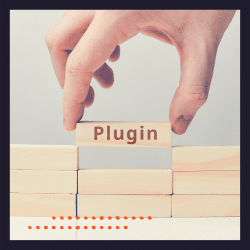The Importance of Website Accessibility
In the digital age, ensuring website accessibility is paramount. Web accessibility implies that websites, tools, and technologies are designed and developed so people with disabilities can use them. Individuals can perceive, understand, navigate, and interact with the web. This also includes the ability to contribute to the web.
Web accessibility encompasses all disabilities that affect access to the web, including auditory, cognitive, neurological, physical, speech, and visual disabilities.
Not only is this a matter of inclusivity, but it is also legally required in many jurisdictions.
Moreover, accessible websites often provide better search results, reduced maintenance costs, and increased audience reach, among other benefits.
WordPress: A Dominant Player in Website Development

Regarding WordPress website development, WordPress unquestionably stands out as one of the most popular platforms worldwide. Since its inception in 2003, WordPress has evolved from a basic blogging tool into a comprehensive Content Management System (CMS).
Today, WordPress powers over 40% of all the websites on the Internet. Its appeal lies in its ease of use, flexibility, and extensive customization options.
It is ideal for websites of all sizes and types – from small personal blogs to large corporate sites.
Moreover, WordPress has a large, active community of developers and users, meaning support and resources for troubleshooting are readily available.
Its dominant status in the market makes WordPress a key platform to consider when addressing web accessibility problems.
The Importance of Accessibility in WordPress

Accessibility in WordPress is not a choice; it’s a responsibility. Given WordPress’s ubiquitous presence on the internet, its accessibility directly impacts millions of users worldwide, including those with disabilities.
With WordPress, website owners can create universal digital experiences, ensuring no one is excluded from accessing information or services.
Moreover, WordPress’s commitment to democratizing publishing means that every user, regardless of physical or cognitive abilities, should be able to publish content.
This core value is reflected in its extensive accessibility features and the community’s ongoing efforts to improve them.
Accessibility in WordPress is essential from a user experience perspective and a moral and social standpoint, reinforcing the platform’s commitment to inclusion and equality.
How WordPress Caters to Accessibility and Where it Might Fall Short

WordPress has made significant strides in catering to accessibility. Its platform offers accessibility-ready themes and plugins designed to improve WordPress website accessibility.
Among these WordPress plugins are tools that assist in making colors more distinguishable, enabling text-to-speech functionality, and optimizing websites for keyboard navigation.
WordPress also encourages its community to contribute to accessibility efforts, advising theme and plugin developers to consider accessibility in their designs.
However, WordPress does face its share of challenges. Not all themes and plugins are built with accessibility in mind, and as a result, they may introduce accessibility barriers when installed on a website.
In addition, the platform has elements that may not be fully accessible. For instance, the Gutenberg editor has faced criticism for not being as accessible as its predecessor, the Classic Editor. Some users with disabilities have reported difficulties navigating and operating the Gutenberg editor, highlighting an area where WordPress could improve further.
Despite these shortcomings, WordPress’s commitment to accessibility is evident in its endeavors to rectify these issues and create an inclusive web environment.
Understanding Web Content Accessibility Guidelines (WCAG)

The Web Content Accessibility Guidelines (WCAG) issued by the World Wide Web Consortium (W3C) play an integral role in promoting web accessibility.
WCAG is a set of recommendations designed to make web content more accessible, primarily for people with disabilities but also for all user interfaces.
POUR: Perceivable, Operable, Understandable, and Robust

The guidelines are organized around four principles, called ‘POUR’: perceivable, operable, understandable, and robust.
Perceivable
Perceivable refers to the information and components of a user interface that must be presentable to users in ways they can perceive. This means the information cannot be invisible to all of their senses.
Operability
Operability implies that the user interface and navigation must be operable, ensuring all users can interact with the site without any hindrance.
Understandable
Understandable indicates that the information and operation of the user interface must be understandable, helping users to comprehend the information and the operation of the user interface.
Robust
Robust means that the content should be robust enough to be interpreted reliably by various user agents, including assistive technologies.
Compliance with these guidelines will make content more accessible to a wider range of people with disabilities, including blindness and low vision, deafness and hearing loss, learning disabilities, cognitive limitations, limited movement, speech disabilities, photosensitivity, and combinations thereof.
Understanding and implementing WCAG is essential to creating an inclusive web environment.
The Need for WordPress Accessibility Plugins

While WordPress as a platform is committed to delivering accessible web experiences, the reality is that not every theme, widget, or plugin follows accessibility best practices.
This is where accessibility plugins come into play. WordPress accessibility plugins are tools designed to identify and fix potential accessibility issues on your website.
They can provide solutions that range from simple color contrast adjustments to complex screen reader optimizations. Using these WordPress plugins, website owners can ensure that their websites are legally compliant and accessible to all users, regardless of their physical or cognitive abilities.
In doing so, they contribute to the broader goal of making the Internet a more inclusive space for everyone.
This article will delve into some of the best WordPress accessibility plugins available, providing insights into their key features, benefits, and how they can enhance your website’s overall accessibility.
Challenges Faced by Differently-Abled Users

Differently-abled users often face numerous challenges when navigating the internet, many of which are unintended consequences of web design and development practices.
Visual Impairment
Firstly, visual impairments can make it challenging to read text or view images that are not properly contrasted. Without the implementation of text-to-speech technology or alternative text for images, these users may struggle to understand the content fully.
Hearing Impairment
Secondly, individuals with hearing impairments may encounter difficulties with video or audio content without subtitles or transcripts.
Motor Disabilities
Thirdly, people with motor disabilities may find it difficult to navigate websites that rely heavily on mouse movements and clicks, particularly if they use assistive technologies such as keyboard navigation or switches.
Congnitaive Challenges
Lastly, cognitive challenges, such as dyslexia or attention deficit disorder, can be exacerbated by complex layouts, inconsistent navigation, or lack of clear instructions.
All these barriers underline the importance of implementing comprehensive accessibility features when constructing websites, particularly on widely used platforms like WordPress.
WordPress Accessibility Plugins and Their Role in Enhancing UX

WordPress Accessibility Plugins are paramount in enhancing User Experience (UX) for all users, including those with different abilities. They serve as invaluable tools in identifying and rectifying potential accessibility issues that could affect a site’s usability.
Plugins like WP Accessibility help remedy common accessibility issues in WordPress themes. It offers helpful accessibility features, like removing target attributes from links, adding skip links, and enforcing high-contrast mode to improve visibility.
UserWay Accessibility Widget is another comprehensive tool that provides various accessibility features, including a text reader and contrast adjustment. It also offers keyboard navigation enhancements for users with motor disabilities.
These plugins significantly enhance a website’s UX by making it more accessible, user-friendly, and inclusive. They testify to WordPress’s commitment to creating an inclusive web environment for all users.
Top WordPress Accessibility Plugins to Improve User Experience

WP Accessibility
WP Accessibility is a comprehensive tool designed to address some of the most common accessibility issues within WordPress themes.
It offers a suite of features to make your website more accessible and user-friendly. For instance, the plugin can add skip-to-content links, enabling users with mobility impairments to bypass content blocks and navigate directly to the information they need.
It also lets you remove target attributes from links, avoiding the disorienting effect of opening new windows or tabs.
Further, WP Accessibility provides a high-contrast mode, significantly improving readability for visually impaired users.
By installing and properly configuring WP Accessibility, website owners can take a significant step towards making the web more inclusive and accessible for all.
One Click Accessibility
One Click Accessibility is another powerful WordPress plugin designed to enhance website accessibility with user-friendly features. With a simple installation and activation process, this free accessibility plugin adds a user interface to your website with various accessibility tools.
It provides features such as font resizing, high contrast mode, and link highlighting that can significantly improve the user experience for visually impaired visitors.
It enables users to desaturate or remove the color from the website for those who find colors distracting or hard to distinguish.
The plugin also has a ‘remove animations’ feature, particularly beneficial for users prone to seizures triggered by flashing or flickering effects.
By utilizing One Click Accessibility, you can make your WordPress website more accommodating for a wider range of users, further promoting inclusivity on the web.
AccessibleWP – Accessibility Toolbar
AccessibleWP is another crucial WordPress accessibility plugin designed to provide immediate access to various accessibility features via a convenient toolbar.
This plugin offers tools such as text resizing, color contrast adjustments, and link highlighting – all of which contribute to a more navigable and user-friendly website. The toolbar is easily visible and intuitive, making the user’s experience more seamless and stress-free.
AccessibleWP additionally includes a grayscale feature, catering to those with color perception challenges by simplifying the website’s visual presentation. Moreover, the plugin enables users to disable animations, helping to prevent the triggering of potential sensory issues or seizures in susceptible individuals.
By incorporating the AccessibleWP plugin, web developers can ensure their WordPress site caters to diverse user needs, demonstrating their commitment to enhancing website accessibility and inclusivity.
WP Accessibility Helper (WAH)
WP Accessibility Helper (WAH) is an all-encompassing WordPress plugin that simplifies website accessibility settings. It comes equipped with a variety of features to rectify common accessibility barriers.
WAH provides an easy-to-use toolbar, allowing users to alter font size and contrast for an enhanced viewing experience. Additionally, it offers a semantic structure audit, making it easier to identify and fix potential issues with the structural elements of a web page.
The plugin also includes a feature to add alt text to images, enhancing the experience for screen reader users.
Furthermore, WAH boasts a DOM scan function, which scans the website’s Document Object Model (DOM) and highlights areas where accessibility improvements may be needed.
By leveraging WP Accessibility Helper, web developers can ensure a more inclusive and accessible web experience for all users.
Accessibility Checker
Accessibility Checker is a robust WordPress plugin that provides automated, straightforward accessibility evaluations for your website’s content.
Whether a novice or an experienced developer, this tool ensures your site meets the latest WCAG.
The plugin scans your content in real-time, pinpointing potential accessibility issues and providing practical solutions to correct them. It checks for color contrast issues, proper use of headings, alt texts for images, and many other key accessibility elements.
Accessibility Checker offers a Pro version with advanced features like complete site scans and prioritized support.
By integrating Accessibility Checker into your WordPress site, you can ensure a more accessible website and inclusive environment for all users.
Conclusion

The road to a more accessible web is paved with strategically implementing the right tools and a conscious commitment to inclusivity.
It requires an understanding of the varying needs of all users and a willingness to adapt and improve our websites to cater to these needs.
By employing WordPress plugins like One Click Accessibility, AccessibleWP, WP Accessibility Helper, and Accessibility Checker, we can remove barriers and make the web a more user-friendly place for all.
But this is just the start. Regular audits, continuous updates, and user feedback are essential to maintain accessibility standards and adapt to evolving user needs.
Let’s embrace this road to a more accessible web, turning it from a path less taken into a well-traveled highway, leading our websites to a future where everyone has equal access.


